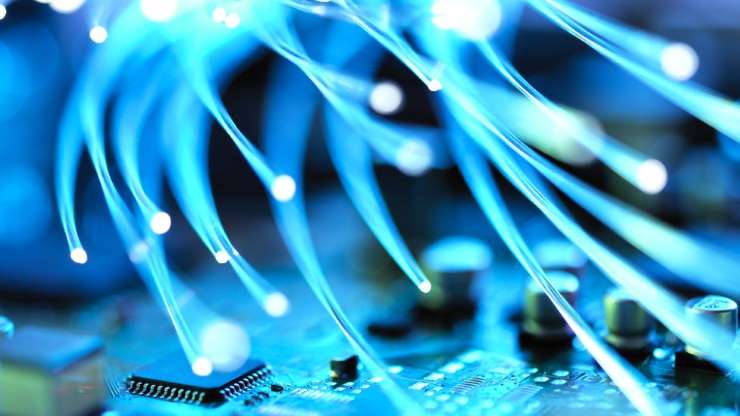Earthquakes may now become easier to detect than ever before, with the aid of developing technology. Researchers in Iceland have successfully used an existing fibre-optic communications cable to assess seismic activity.
Such cables are laid beneath the ground in countries around the world, to supply internet and television service.
The technique has proven sensitive to ground shaking, but is not yet ready for widespread use.
It joins a series of recent advances in earthquake sensing, including smartphone apps and more affordable detection hardware.
How does it work?
Earthquake activity is usually monitored by seismometers – carefully calibrated and expensive devices placed at sensitive locations.
The method tested by the research team, led by Dr Philippe Jousset from the GFZ German Research Centre for Geosciences, used 15km of fibre-optic cable that had originally been installed between two geothermal power plants in Iceland in 1994.
A laser pulse sent down a single fibre of the cable was sufficient to determine whether there were any disturbances along its length.
“Initially we did not know what we would be able to record,” Dr Jousset told BBC News, “but we could detect earthquakes from far away.”
When the ground, and consequently the cable, was stretched or compressed, the team were able to record it.
They detected local traffic, seismic shaking and even passing pedestrians. They also picked up a signal from a strong earthquake in Indonesia.
“It’s almost as good as a seismometer,” says Dr Jousset.
Earthquake early warning
The instrument that needs to be attached to each cable to make the monitoring possible is currently expensive, but researchers are working on cost-effective alternatives.
But were these to become available, this method has all the appearance of a highly affordable alternative to expensive seismic networks.
Dr Elizabeth Cochran, a geophysicist with the United States Geological Survey (USGS), says the technology could potentially be applied to earthquake early warning systems, once refined.
Such networks, already active in countries like Japan and Mexico, act to warn the local population when an earthquake begins.
“For [early warning] we don’t necessarily need highly precise information… we just need to know that large ground motions are occurring in an area.”
“There are thousands of kilometres of cables already criss-crossing cities. So, if we can tap into these cables and figure out how to interpret the data accurately, then there is a very exciting potential for very dense sensor networks everywhere that there are cables,” she told BBC News.
Currently, seismometers are still being placed for ShakeAlert, an early warning system for the US west coast.
What’s the catch?
In addition to refining the technique, there will be additional challenges.
“A lot will depend on the willingness of communications companies to buy into the concept, and to offer use of their cables at minimal or no cost,” explains Dr Cochran.
She notes that “most companies in the United States have lent access to the cables for a limited amount of time, but have suggested they would charge for longer term access.”
However Dr Jousset’s team have found companies in Europe quite open to the idea.
They are set to conduct further studies in the near future, and he is optimistic about the technology’s potential for monitoring volcanic and earthquake activity.
“At present there are more and more possibilities, so the prices are going down. It could be operational in a few years’ time. Not everywhere, but somewhere.”








